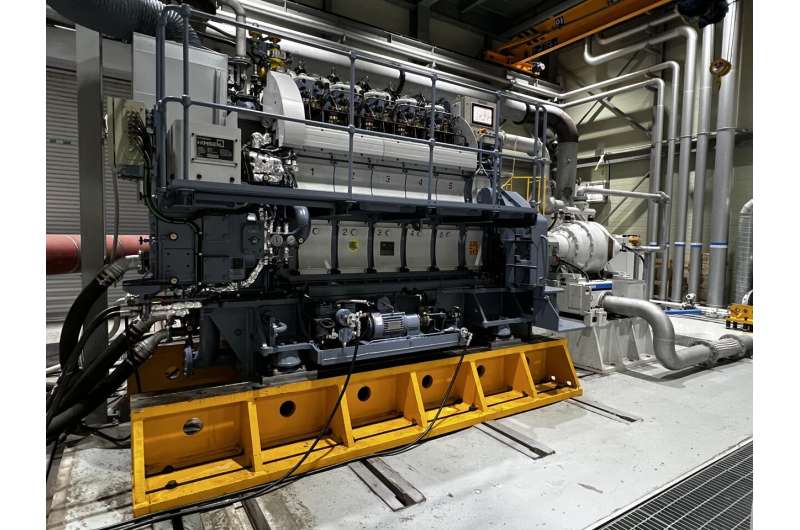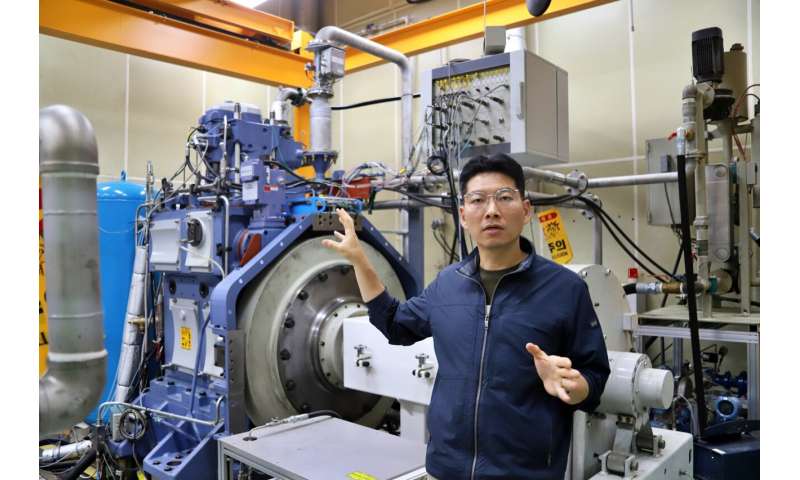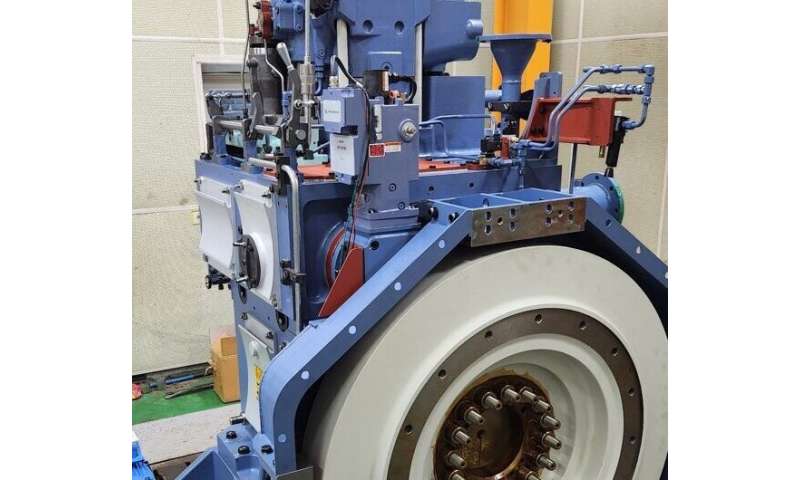This article has been reviewed according to Science X's editorial process and policies. Editors have highlighted the following attributes while ensuring the content's credibility:
fact-checked
trusted source
proofread
Ammonia-fueled marine engine cuts CO₂ emissions by 50%

MW-class marine engine combustion technology that uses ammonia—a future renewable energy source—as fuel will be applied on-site for the first time in Korea. A ship engine fueled by ammonia is expected to accelerate its competitiveness in the global market, which aims to develop an environmentally friendly marine engine.
A joint research team led by the principal researcher Cheol-Woong Park of the Korea Institute of Machinery and Materials (KIMM), the Korean Register, HD Hyundai Heavy Industries, HD Korea Shipbuilding & Offshore Engineering, the Korea Research Institute of Ships and Ocean Engineering (KRISO), and Kunsan National University, has successfully demonstrated technology using the LNG-ammonia dual-fuel engines at the KR Test & Certification Center (KR TCC).
The research team has demonstrated the test by injecting ammonia at high pressure into the combustion chamber of a marine engine and has maintained stable combustion of high power and thermal efficiency. Ammonia is a promising carbon-neutral fuel. However, it is a difficult material to manage as a fuel supply, due to concerns such as corrosiveness and toxicity. Furthermore, problems result in a decrease in engine power and efficiency in an ammonia-fueled marine engine because it requires high ignition energy to ignite, and incomplete combustion increases due to a slow combustion speed.
-

Principal Researcher Cheol-Woong Park of the KIMM is explaining MW-class LNG-ammonia dual-fuel marine engine technology. Credit: Korea Institute of Machinery and Materials (KIMM) -

Large single-cylinder LNG-ammonia dual-fuel marine engine in KIMM. Credit: Korea Institute of Machinery and Materials (KIMM)
The technology demonstration testing ammonia as a fuel has been verified by changing the O-ring material in the supply system in the MW-class LNG-ammonia dual-fuel engine. The changing of the material has prevented corrosion and external leakage of ammonia and has reduced carbon dioxide emissions by more than 50%.
The research team has satisfied the requirement of the ignition condition that requires high energy by optimizing the ammonia fuel injection timing and combustion speed. Additionally, the technology demonstration has solved both improving power output performance and reducing emissions at the same time by injecting high-pressure ammonia fuel directly into the combustion chamber and maximizing thermal efficiency by mixing lean burn with air.
Senior researcher Cheol-Woong Park of the KIMM said, "MW-class ships, LNG-ammonia dual-fuel engine combustion technology is an exceptional technology that can satisfy greenhouse emission regulations and secure the forefront in the future of the shipbuilding industry. The technology can be applied to a ship's engines; it can also expand its application to various power sources that must reduce greenhouse emissions such as automobiles and generators."


















